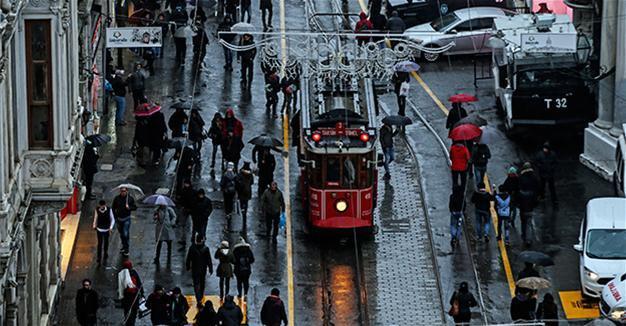Turkey’s unemployment rate rises to 12.1 pct, highest in seven years
ANKARA

Turkey’s unemployment rate rose to 12.1 percent in November 2016, marking the highest such rate since March 2010, official data showed on Feb. 15.
The number of unemployed persons aged 15 years and above rose to 3.7 million in November 2016, 590,000 more than the same period of the previous year, pushing the unemployment rate to 12.1 percent with a 1.6 percentage point increase, according to Turkish Statistics Institute (TÜİK) data.
While the youth unemployment rate, including persons aged 15-24, was 22.6 percent with a 3.5 percentage point increase, the unemployment rate for persons aged 15-64 was 12.3 percent with a 1.6 percentage point increase.
The seasonally adjusted unemployment rate was also announced at 11.8 percent with a 0.1 percentage point increase.
The number of employed people was 27.07 million in November 2016, up 391,000 from a year earlier. The labor force participation rate (LFPR) was 52.1 percent, up 0.9 percentage point or 980,000.
According to analysts, the rise in the participation to the labor force had an impact pushing up the unemployment rate, noting that a declining trend in the jobless rate was not expected in the short term.
“The limited recovery in the industrial employment in the fourth quarter of 2016 was in compliance with the slight recovery in economic activity. However, we do not expect a decrease in the unemployment rate in the short term until the yields of the recently-launched ‘employment incentives’ are seen,” said İş Investment Economist Muammer Kömürcüoğlu, as quoted by Reuters.
The government’s “employment mobilization” campaign, which will start in early March, is planned to create 2 million new jobs, according to top officials.
Depending on the extent to which the private sector takes part in the campaign, some decrease can be seen in the unemployment rate, analysts say.
“The change in the participation to the labor force will play a key role. If participation increases, we will see a slight decrease in the unemployment rate. At the end, we do not expect any permanent decline in the unemployment rate until economic activity sees a strong recovery,” said Kömürcüoğlu.
According to TÜİK data, the number of agricultural employment decreased 101,000 persons while the number of non-agricultural employment increased 491,000 persons in this period. According to the distribution of employment by sector; some 18.7 percent was employed in agriculture, 19.6 percent was in industry, 7.4 percent was in construction and 54.2 percent was in services.
Employment in agriculture decreased by 0.6 percentage point, industry decreased by 0.5 percentage point and construction decreased by 0.1 percentage point while services increased by 1.1 percentage point.
 Turkey’s unemployment rate rose to 12.1 percent in November 2016, marking the highest such rate since March 2010, official data showed on Feb. 15.
Turkey’s unemployment rate rose to 12.1 percent in November 2016, marking the highest such rate since March 2010, official data showed on Feb. 15.